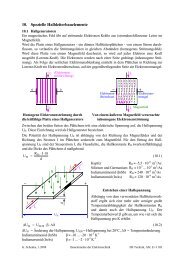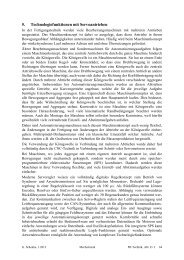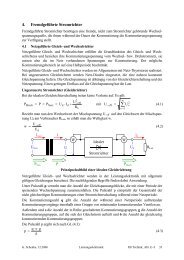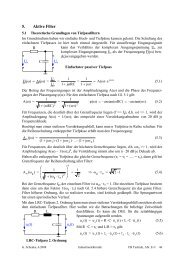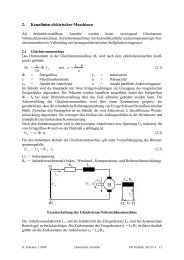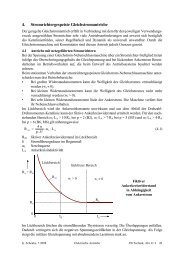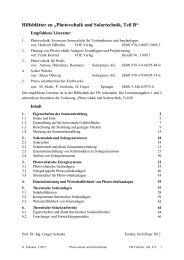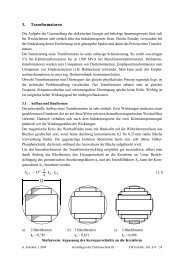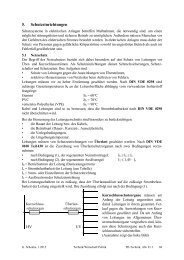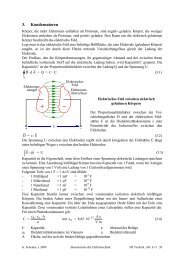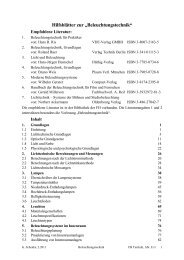Create successful ePaper yourself
Turn your PDF publications into a flip-book with our unique Google optimized e-Paper software.
AD538<br />
TRANSDUCER LINEARIZATION<br />
Many electronic transducers used in scientific, commercial or<br />
industrial equipment monitor the physical properties of a device<br />
and/or its environment. Sensing (and perhaps compensating for)<br />
changes in pressure, temperature, moisture or other physical<br />
phenomenon can be an expensive undertaking, particularly<br />
where high accuracy and very low nonlinearity are important. In<br />
conventional analog systems accuracy may be easily increased<br />
by offset and scale factor trims, however, nonlinearity is usually<br />
the absolute limitation of the sensing device.<br />
With the ability to easily program a complex analog function,<br />
the AD538 can effectively compensate for the nonlinearities of<br />
an inexpensive transducer. The AD538 can be connected between<br />
the transducer preamplifier output and the next stage of<br />
monitoring or transmitting circuitry. The recommended procedure<br />
for linearizing a particular transducer is first to find the<br />
closest function which best approximates the nonlinearity of the<br />
device and then, to select the appropriate exponent resistor<br />
value(s).<br />
ARC-TANGENT APPROXIMATION<br />
The circuit of Figure 17 is typical of those AD538 applications<br />
where the quantity V Z /V X is raised to powers greater than one.<br />
In an approximate arc-tangent function, the AD538 will accurately<br />
compute the angle that is defined by X and Y displacements<br />
represented by input voltages V X and V Z . With accuracy<br />
to within one degree (for input voltages between 100 µV and<br />
10 volts), the AD538 arc-tangent circuit is more precise than<br />
conventional analog circuits and is faster than most digital techniques.<br />
For a direct arc-tangent computation that requires fewer<br />
external components, refer to the AD639 data sheet. The circuit<br />
shown is set up for the transfer function:<br />
where:<br />
( )<br />
V = V − V<br />
θ θREF<br />
θ<br />
121 .<br />
( Z ) ⎤<br />
⎥<br />
X ⎥<br />
⎡ V<br />
⎢<br />
V<br />
⎣<br />
⎢<br />
( )<br />
θ=Tan −1 ⎛ Z ⎞<br />
⎜ ⎟<br />
⎝ X ⎠<br />
The (V θREF – V θ ) function is implemented in this circuit by<br />
adding together the output, V θ , and an externally applied reference<br />
voltage, V θREF , via an external AD547 op amp. The 1 µF<br />
capacitor connected around the AD547’s 100 kΩ feedback<br />
resistor frequency compensates the loop (formed by the amplifier<br />
between V θ and V Y ).<br />
⎦<br />
V 1.21<br />
V = [V REF –V ] ( Z<br />
) = TAN –1 Z<br />
( )<br />
<br />
A<br />
I Z 1<br />
18<br />
R A<br />
V 25k<br />
LOG<br />
Z D 931, 1%<br />
V Z 2<br />
RATIO<br />
17<br />
B<br />
3<br />
16 I X<br />
+10V<br />
V X<br />
4<br />
15<br />
V X<br />
100<br />
100<br />
25k SIGNAL<br />
GND<br />
+2V 5<br />
14<br />
PWR<br />
+V INTERNAL<br />
S<br />
GND<br />
+15V<br />
6 VOLTAGE AD538 13<br />
1F<br />
REFERENCE<br />
–V S C<br />
–15V<br />
7 OUTPUT<br />
12<br />
1F<br />
V O 25k<br />
IN4148<br />
I Y<br />
V 8<br />
ANTILOG<br />
11<br />
V Y<br />
I 9<br />
LOG<br />
10<br />
25k<br />
0.1F<br />
R1*<br />
+15V R2*<br />
100k<br />
100k<br />
10k<br />
FULL-SCALE<br />
AD547JH<br />
ADJUST 118k<br />
* RATIO MATCH 1% METAL<br />
1F 100k<br />
FILM RESISTORS FOR BEST<br />
ACCURACY<br />
–15V<br />
Figure 17. The Arc-Tangent Function<br />
The V B /V A quantity is calculated in the same manner as in the<br />
one-quadrant divider circuit, except that the resulting quotient<br />
is raised to the 1.21 power. Resistor R A (nominally 931 Ω) sets<br />
the power or m factor.<br />
For the highest arc-tangent accuracy the external resistors R1<br />
and R2 should be ratio matched; however, the offset trim<br />
scheme shown in other circuits is not required since nonlinearity<br />
effects are the predominant source of error. Also note that instability<br />
will occur as the output approaches 90° because, by definition,<br />
the arc-tangent function is infinite and therefore, the AD538’s<br />
gain will be extremely high.<br />
V X<br />
X<br />
–10– REV. C



